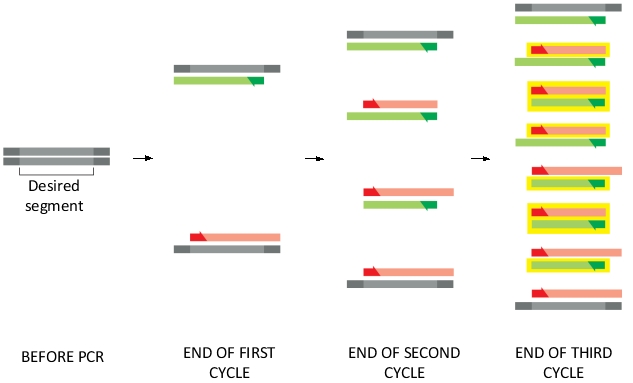Short Answer
Each cycle of PCR doubles the amount of DNA synthesized in the previous cycle. A pair of primers is used to direct the specific synthesis of a desired DNA segment. The following diagram shows the products of PCR amplification after three cycles. The DNA strands of the desired segment are indicated in yellow boxes in the diagram. As shown, at the end of the third cycle, 8 out of 16 strands have the desired length and are boxed. After four more cycles (i.e. at the end of the seventh cycle), how many strands of DNA are expected to be synthesized? How many of them have the desired length? Write down the two numbers and separate them with a comma, e.g. 16,8.

Correct Answer:

Verified
The total number of DNA strands grows e...View Answer
Unlock this answer now
Get Access to more Verified Answers free of charge
Correct Answer:
Verified
View Answer
Unlock this answer now
Get Access to more Verified Answers free of charge
Q22: The specificity of nucleic acid hybridization is
Q23: In which of the following organisms is
Q24: Indicate whether each of the following descriptions
Q25: Migration of proteins during separation by SDS
Q26: You have used a reporter gene system
Q28: Due to friction with molecules of the
Q29: Consider a genetic network consisting of gene
Q30: Which equation better describes the steady-state concentration
Q31: You have studied mutations in a transcription
Q32: What are the advantages of monoclonal antibodies